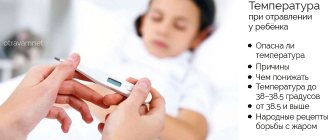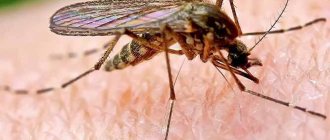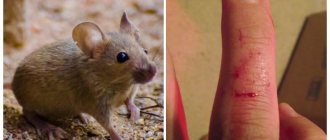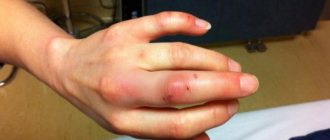It’s hard to imagine that an adult would taste PVA glue, but this happens to children all the time. This situation especially often happens if the glue is stored in the access area of children or the adhesive is poured into another container. Although PVA is not considered a toxic substance, troubles can arise after such a tasting. In this case, the main thing is not to get confused and provide timely assistance to the victim. So what happens if you drink glue, what health effects can you expect in this case?
Characteristics of PVA
Polyvinyl acetate, which is the full name of the glue, is considered the most common adhesive in the world. It is used both for domestic needs and in industrial production. The popularity can be explained by its low cost, ease of use and good results. This adhesive can bond a wide range of materials, from paper to leather.
This glue necessarily includes vinyl acetate, the proportion of which in the glue is very large. Depending on the purpose, various additives can be added to the adhesive base, for example, to impart elasticity or protect the glued materials from fungus.
How to properly rinse the stomach of children
If the poisoning is 3 points (see above), then in this case it is quite possible to perform gastric lavage yourself. How to do this correctly?
- Pour 2 teaspoons of salt into a jar of boiled water and stir.
- Give your baby water with salt - he should drink it in one gulp, without stopping.
- Place the child on the bed so that his head hangs down; Place the basin next to it.
- Place two fingers in his mouth on the base of his tongue and move them to induce vomiting.
- If you can’t induce vomiting for a long time, give your baby a tablespoon of emetic root (available at any pharmacy). Wait 15 minutes - if there is no result, give another tablespoon - you cannot give the solution more than twice.
- After washing, give the baby sorbents.
This procedure must be repeated several times until the vomit is clear. All points must be done promptly - procrastination is unacceptable here.
Who plays with colors?
The volume of water in which you will dissolve the salt depends on the age of your child. If he is six months or a year old, then 100 ml will be needed. For children from two to five years old, 200-300 ml for a single dose will be enough. At 6-10 years old they give 300-400 ml, and at 11-15 years old - 400-500.
If after taking a toxic substance the child loses consciousness, then the actions are as follows:
- Place him on his chest so that his knee is bent at a right angle - otherwise he will turn over, his head back.
- Moisten cotton wool with ammonia and let your baby smell it.
Signs of PVA poisoning
If you drink PVA glue, the signs and consequences will depend on the volume consumed and the presence of toxic additives in the adhesive base. When using a small amount of glue, the victim experiences mild intoxication, which is manifested by the following symptoms:
- dizziness occurs;
- there is severe nausea, which always ends in vomiting;
- A person who drinks glue has a severe headache.
If a significant amount of glue is consumed, especially with various additives, diarrhea occurs and confusion may occur. The consequences directly depend on the age of the victim and his body weight.
For an adult and healthy person, this can pass almost without a trace, but a younger child will almost certainly need the help of a doctor.
Polyvinyl acetate is considered one of the safest adhesives, but despite this it must be hidden away from children.
Black list
Wallpaper or construction glue, unfortunately, are not the only harmful substances. There are also a lot of toxic glues, ointments, drugs, and household products from which you need to protect your child as carefully as possible. But if, after all, the baby “gets” to harmful substances, then it is simply necessary to know what to do in this case - to panic or not. For this reason, here is a list of toxic substances with toxicity points.
- high degree of danger
- medium level of danger
- low degree of danger
- Ammonia - 3
- Perfume – 3
- Nail polish remover - 2
- Poison for rodents - 2
- Nail polish – 1
- Morphine - 2
- Engine oil - 2
- Drops for the heart – 2
- Laxatives – 1
- Cleaning products - 2
- Caustic soda - 3
- Acetone - 1
- Gasoline - 2
- Antibiotics - 2
- Valerian – 3
- Vinegar essence – 1
- Plasticine - 3
- Cat food - 3
- Instant coffee – 3
- Paints – 2
- Bleach - 2
- Vodka - 1
- Soda - 2
- Soap - 3
- Toothpaste – 3
- Sulfur on matches - 3
- Shampoo – 2
- Shoe polish - 1
- Tobacco - 2
- Turpentine - 2
- Body deodorant – 3
- Diesel oil - 2
- Body lotion – 3
- Fuel oil - 2
- Eucalyptus oil – 2
- Toadstools - 1
- Lead chromate - 1
- Hand cream – 3
- Stain remover - 2
- Formaldehyde - 2
- Antifreeze - 2
- Hair dye - 2
- Turpentine - 2
- Ink - 2
Single-point substances are extremely dangerous to life. If your baby suddenly eats one of them, do nothing, but immediately call an ambulance. Two-point ones are less dangerous; you can rinse your stomach yourself, but you will have to call an ambulance. Three-point ones are not so dangerous; to get rid of them, you also need to rinse the stomach and give the child sorbents. However, if your child's condition worsens, consult a doctor.
What to do if a child drinks PVA
If a child accidentally drinks polyvinyl acetate, he needs immediate first aid. Knowing the basics of providing assistance will help preserve the child’s health, and in some cases, save his life. Help is provided according to the following algorithm:
- Be sure to rinse the stomach with a large volume of water. For greater effect, add soda or crushed activated carbon tablets to the washing liquid. The procedure should be carried out until the waste water becomes completely clean.
- The victim is given adsorbents in a therapeutic dose. It is better to use enterosgel, which has an enveloping effect, but if you don’t have it in the house, then absolutely any sorbents, even activated carbon, will do.
- The baby is constantly monitored; if his behavior somehow changes or there is noticeable clouding of consciousness, then immediately call an ambulance.
- After it has been noticed that the child has drunk PVA, he should not drink or eat anything until the stomach is washed and examined by a doctor.
It should be remembered that children under 5 years of age cannot have their stomach washed at home, as dehydration quickly occurs due to their low body weight. In this case, the child is given a lot to drink, and vomiting occurs spontaneously.
The arriving doctor must be shown the packaging of the glue that the child or adult used.
Toxic nails
If in the case of wallpaper glue we can talk about minor damage to human health, then liquid nails are a substance that is very dangerous for children. “Liquid nails” are an adhesive based on synthetic rubber and polymers, as well as titanium dioxide, toluene and acetone. The last two substances are very toxic and can affect the central nervous system.
Liquid nails are a very popular adhesive
Therefore, immediately, as soon as your child has eaten this nasty thing, call an ambulance. You can give the baby sorbents (filtrum, since activated carbon will not cope here) and wait. In this situation, only experienced doctors will be able to flush the stomach and intestines as needed.
Can PVA glue internal organs?
Many people have a question: if you eat PVA glue, will your internal organs stick together? Such trouble will definitely not happen and there is a fairly simple explanation for this. This adhesive is water-based and can only dry in air, where the water gradually evaporates. In the human body, the glue remains in liquid form, so there will definitely be enough time to lavage the stomach.
The worst thing that can happen when adults consume a small amount of PVA is diarrhea and vomiting, but it is worth noting that not everyone’s body reacts this way. The situation is worse with children; they may experience more severe health problems, since the immune system and internal organs are not yet fully formed.
If a person has chronic stomach diseases, such as gastritis or ulcers, then after consuming glue they will worsen. Because of this, the victim will be treated in the gastroenterology department for a long time.
After accidentally using glue, you should see a doctor to rule out late consequences.
Extremely dangerous
Wallpaper glue is an adhesive substance that is used to attach wallpaper to a wall. In its content you can find: methylcellulose, modified starch or carboxymethylcellulose, as well as additional substances: PVA glue and disinfecting components (fungicides and bactericides). Let's take a closer look at each substance to find out to what extent it is dangerous for the human body.
Methylcellulose
This is a white powder that is known not only for its “adhesive” properties. It is also added to paints as a thickener and to food products. The powder dissolves quickly in water, and upon contact with fire it becomes a gel. Recently, American scientists discovered that methylcellulose is an invaluable treasure for...those who are on a diet.
Wallpaper glue in dry powder form
This substance can cause a feeling of fullness. If you add it to a portion of food, you will be full earlier. This is data obtained after an experiment conducted by researchers. They also advised adding the substance to cold drinking products: yoghurts or drinks.
So, is methylcellulose dangerous to human health? Answer: no!
Modified starch
Starch is a white powder that is insoluble in water. Modified starch is processed starch. This substance is also actively used in the food industry, and today there are 20 types of modified starch that can be consumed without fear. More often the substance can be found in meat products: sausage, lard, and semi-finished products. There are several of them, and they are designated E1404 or E1420. By the way, let’s dispel another myth.
It is believed that such additives, which have the letter E in their designation, should be feared like fire. This is wrong. E means “Europe”, because this marking was invented in the European Union 80 years ago. Remember: not a single additive that can cause serious harm to the health and life of people can enter food products! This is strictly monitored by the World Health Organization and the UN. It follows that modified starch - the one that is listed in store-bought sausage - is not dangerous.
Regular food starch that we are used to
But what kind of starch is in wallpaper glue? Almost the same, only treated with acetylene - a compound with acetic acid - so that the glue thickens. There is nothing dangerous about it either. Another issue is the shelf life of starch. The fact is that it can deteriorate or begin to rot. Therefore, before use, you need to pay attention to the sell-by date of the glue.
So, is modified starch dangerous for human health? Answer: no! (if the product is not spoiled)
Carboxymethylcellulose
Food stabilizer E466 - carboxymethylcellulose - a colorless acidic liquid obtained from the natural compound cellulose. Mayonnaise, creams for cakes, jellies, fillings for pies - in all of this you can find this absolutely harmless additive. It helps substances connect, holds molecules together. Therefore, it is used as a base for wallpaper glue.
So, is carboxymethylcellulose dangerous to human health? Answer: no!
Polyvinyl acetate (PVA) is a non-toxic, odorless substance that has adhesive properties. Water and polyvinyl alcohol are also added to it - this is how PVA glue is obtained. It is not dangerous either for the skin, or for the lungs, or for the body as a whole - it is not for nothing that children use it in kindergartens and schools. However, if this does not seriously harm the gastrointestinal tract, it can cause upset.
ADVICE. Do not confuse PVA glue with office glue. The latter contains poisonous phenol, which, even if consumed in small quantities, can cause kidney failure and even pneumonia.
PVA glue is sold in most hardware stores and is easy to buy.
So, is PVA glue dangerous for human health? Answer: not really!
Fungicides
This is the number one enemy for fungal formations! Fungicides contain sulfur and its compounds, as well as copper compounds. It may also contain toxic substances - harmful phenols and even mercury and cadmium compounds.
So, are fungicides dangerous to human health? Answer: yes!
Bactericides
Almost the same as fungicides, only the former contains antiseptics and antibiotics. Undoubtedly, such substances have a detrimental effect on our health.
So, are bactericides dangerous to human health? Answer: yes!
As a result, of all the listed components in wallpaper glue, only fungicides and bactericides can negatively affect the human body; everything else is absolutely harmless. However, there is harm, and if a child has eaten wallpaper glue, then you should still worry.
ADVICE. If you notice that your child is putting something nasty in his mouth, quickly turn him over in an L shape - this way he won’t be able to swallow anything, and then press on his cheeks, thereby closing his jaws.
What consequences may there be
If you accidentally use a small amount of glue, there will most likely be no consequences. In just a couple of days a person will suffer from an upset stomach and gradually everything will return to normal.
Consequences may occur if a low birth weight child or a person with chronic diseases and weak immunity drank quite a lot of PVA. In this case, there may be the following consequences:
- Exacerbation of chronic diseases.
- Deterioration in the functioning of internal organs.
- Dysfunction of the nervous system.
- Allergic reactions.
In all these cases, prolonged symptomatic treatment in a hospital is required. Upon admission, the patient’s stomach is washed and intravenous infusions of glucose and saline are prescribed to support the body.
If the victim has a tendency to allergies, then after first aid he is given antihistamines.
When is medical attention required?
Medical attention is needed if:
- against the background of emergency assistance measures, the victim’s condition remains stable and severe or negative dynamics are noted;
- a child, pregnant woman or elderly person was injured;
- uncontrollable vomiting developed;
- there are traces of blood in the vomit or stool;
- the victim has active cardiac complaints (pain, interruptions in heart function, palpitations, rhythm disturbances, a sharp increase or decrease in blood pressure);
- Intense neurological symptoms developed: a state of altered consciousness, convulsions, loss of consciousness.
The victim is hospitalized in the toxicology department, where he receives detoxification therapy:
- Forced diuresis (taking diuretics in combination with water load - abundant alkaline drinking (up to 3-5 liters per day) to activate the elimination of toxins by the kidneys).
- If forced diuresis is ineffective, hemodialysis and hardware blood filtration (“artificial kidney”) are used.
- Hemosorption, the distillation of blood through a column with an adsorbent to bind and remove toxins.
In addition to specific treatment, the victim receives symptomatic treatment depending on the developed or threatening complications:
- antibacterial drugs and glucocorticosteroid hormones for pulmonary edema;
- intravenous drip administration of plasma-substituting fluids;
- hormonal and cardiovascular drugs for cardiac symptoms;
- hemostatic agents for gastrointestinal bleeding, etc.
How to prevent PVA poisoning
Any poisoning is always easier to prevent than to treat. Therefore, to avoid polyvinyl acetate intoxication, it is necessary to follow a number of rules:
- Do not leave a jar of glue in sight of children, especially younger ones;
- Children should make crafts using glue only under adult supervision.
- It is strictly forbidden to pour the adhesive composition from the original container.
- For children's crafts, purchase PVA without any additives. Supplements are usually identified by additional letters on the label;
- Explain to children that glue is toxic and they should not put it in their mouth, as it can cause poisoning.
It is difficult to imagine a house in which there would not be a tube of PVA glue. This adhesive composition is used in various fields; with its help, young children learn to make their first crafts, and adults restore seemingly hopelessly damaged things. Although this adhesive is not toxic, it is not intended for ingestion. Therefore, it must be handled with extreme caution.
Of course, glue poisoning has a negative effect on us. There is nothing to argue here. But how strong are the consequences and what is the best thing to do at the first symptoms? There is a possibility of developing coma. Remember. It depends on how weak the excitement is or how severely the person is poisoned. This is directly proportional to how much glue is taken. Contact of glue with your skin is very dangerous. If anyone didn’t know, the glue is dangerous due to vapors of the volatile monomer, or also other components, and maybe solvents. Some adhesives, also called synthetic, can have a very dangerous irritant effect. This causes allergy-related diseases. This effect can be very toxic and cause irreversible harm to your body.
Treatment prescribed by the doctor
The treatment that a doctor prescribes for patients with glue poisoning is called syndromic. And in order to prevent cruel consequences, it is necessary to do first aid before the doctor arrives. Water and soda must pass into the body through the stomach. That is, this is cleansing. If a material such as glue gets into the body, the place where it got in is washed with water. If glue entered your body through the stomach, that is, you swallowed it, then you urgently need to remove it from there with a gag reflex. Before you do this, drink a few glasses of water and sodium bicarbonate. Now you need to wait for the doctor and she will do everything she says. You may need to be hospitalized. People with glue poisoning often end up in the hospital, but not for long. No more than a week until the doctor does all the necessary tests.
How is prevention carried out?
It is necessary to prepare the glue for work in a room that can be very well ventilated. When you use very toxic adhesives, which are called highly toxic, you need to set the hood to full. Be sure to, according to the BZD, when working with glue, purchase personal or group protective equipment, depending on how many people are working. After working with glue, be sure to take a warm shower and use a rich cream on your hands.
If it turns out that a small amount of glue gets on the skin, then immediately clean it with soap and water. Next, after washing with soapy water, make a solution of baking soda and wash your hands with it. After this, it is urgent to lubricate the affected area with Vaseline glue. It is better to avoid such a hit and use rubber gloves.
Glue poisoning has a number of features depending on its composition. Glue is a sticky substance consisting of compounds of different origin and chemical structure, capable of gluing various materials.
Bonding is achieved by tight adhesion between the adhesive and the two surfaces. The strength of such a bond depends on the adhesion of the molecules of the main component to each other.
Nutrition after poisoning
It is natural that on the day of poisoning the baby will refuse to eat, but he must eat in order to gain strength. Remember that after gastric lavage, a lot of water is lost in the body and the water-salt balance is disturbed. For this reason, immediately after poisoning, the child must be intensively soldered. The next day, his body will begin to return to normal, then you can give warm (but not hot!) food in liquid or semi-liquid form: low-fat kefir, mashed potatoes, boiled fish, steamed vegetables. In case of poisoning, it is prohibited to feed your baby pasta, sausage, fried foods, butter, milk, or offer carbonated drinks.
Take care of proper nutrition after poisoning
Let's summarize. You learned what to do if your baby ate wallpaper paste. First: provide primary care - induce vomiting and rinse the gastrointestinal tract with saline solution. You also learned how to do gastric lavage correctly. In addition, you know which substances are the most toxic, which ones are not so toxic, and what to feed your child after poisoning. Health to you and your baby!
Adhesives connect surfaces using pressure and chemical composition. Manufacturers are constantly improving the synthetic formula, improving the structure and increasing the quality for better bonding.
However, glue is a highly toxic product. The risk of overdose at work, production and everyday life is high. Glue poisoning poses a health threat to adults and children.
Causes of glue poisoning
There are accidental glue poisonings, when during prolonged work with the substance a large amount of vapor is inhaled, as well as glue poisoning as a result of substance abuse and with suicidal intent.
According to time intervals, acute and chronic intoxication are distinguished, as well as three degrees of severity: mild, moderate and severe. It is worth noting that addiction to adhesives most often refers to chronic forms of poisoning, although acute intoxication may occur during the first attempts to inhale adhesive vapors.
The group of people who are susceptible to glue poisoning includes representatives of the construction professions, as well as children. Mostly, poisoning occurs due to irrational use of the substance and insufficient parental supervision.
When glue gets on the skin (provided there is no wound surface), poisoning rarely occurs, but upon contact with mucous membranes, toxins are absorbed into the blood very quickly.
Is pva harmful to humans – Lawyers
- Extremely dangerous
- First aid
- Toxic nails
- Black list
- How to properly rinse the stomach of children
- Nutrition after poisoning
- Rules for helping a child who has eaten wallpaper glue. Quite comfortable and cozy Children are such fidgets! They climb, run, jump, and turn everything upside down everywhere. Sometimes these pranks do not end in the most joyful way. Suppose a child “gets” to wallpaper glue and decides to taste it. What are the actions—to sound the alarm or not to worry at all? What a disgusting thing this wallpaper paste is! Particularly dangerous Wallpaper glue is an adhesive substance that is used to attach wallpaper to the wall. In its content you can find: methylcellulose, modified starch or carboxymethylcellulose, as well as additional substances: PVA glue and disinfecting components (fungicides and bactericides).
Important
There are both supporters and opponents of laminated veneer lumber, who claim that all compositions are dangerous due to their fumes. Let's try to figure it out and find out the truth. Harm from PVA glue in laminated timber First of all, it is worth saying that a lot depends on the manufacturer and the quality of the materials he uses.
Attention
The highest quality requirements are imposed on adhesive compositions, so modern materials are safe and, after hardening, no longer emit any harmful substances. If the gluing technology is followed, the danger of glue is reduced to zero, so a beautiful and warm house made of this material can be safely erected on your site without fear of consequences for the body.
Of course, there are also unscrupulous manufacturers and suppliers on the market, so it is important to make sure in a timely manner that they have all the necessary documents confirming the high quality of their products.
What can happen if you drink pva glue
When using any remedy, it is worth getting advice from a specialist, because it is not propolis itself and its effect on the body that is scary, but self-medication, which patients often resort to. Propolis for children. Benefit or harm According to many studies, propolis is a good help for antibiotics.
It turns out that bee glue is a good alternative to synthetic drugs. How to use propolis correctly in childhood? What ailments does this natural disinfectant help with? And what are the possible contraindications? Let's try to figure it out in more detail.
Propolis is widely used to treat young patients, as well as to strengthen children's weak immunity. Many parents prefer the use of natural natural medicines to chemical drugs, but before doing so, you should consult a specialist and do an allergy test.
If there is a child in the house - the safest adhesives
Bee glue is not recommended for use by children who are allergic to any bee products. As mentioned above, it can be beebread, honey, pollen, royal jelly, etc. It is likely that propolis will also cause an allergic reaction.
Severe allergic reactions to propolis can cause dangerous consequences. Anaphylactic shock, Quincke's edema, bronchial asthma, hemolytic anemia - this is not the full range of diseases that can be provoked by the uncontrolled use of an unfamiliar product.
To carry out the test, you need to apply a small amount of the substance to the elbow. You can resort to a medical determination by taking an allergen test. After several hours, it is worth observing the body.
If there are no changes, then it is possible to use the drug in moderate doses.
What to do if a child eats wallpaper paste
After this, give your baby activated carbon (10-20 tablets) to prevent harmful substances from entering the blood. After some time, the gastric lavage procedure must be repeated.
- If the baby begins to lose consciousness, call an ambulance immediately! At the same time, remember that giving him something to drink in such a situation is strictly prohibited! Calmly wait for the doctor to examine the child and prescribe the appropriate treatment.
Toxic nails If in the case of wallpaper glue we can talk about minor damage to human health, then liquid nails are a substance that is very dangerous for children.
«
What glue is the safest?
Remember: not a single additive that can cause serious harm to the health and life of people can enter food products! This is strictly monitored by the World Health Organization and the UN.
It follows that modified starch - the one that is listed in store-bought sausage - is not dangerous.
Ordinary food starch that we are used to. But what kind of starch is in wallpaper glue? Almost the same, only treated with acetylene - a compound with acetic acid - so that the glue thickens. There is nothing dangerous about it either. Another issue is the shelf life of starch.
The fact is that it can deteriorate or begin to rot. Therefore, before use, you need to pay attention to the sell-by date of the glue.
Is pva glue harmful to the face?
However, if this does not seriously harm the gastrointestinal tract, it can cause upset. PVA glue ADVICE. Do not confuse PVA glue with office glue.
The latter contains poisonous phenol, which, even if consumed in small quantities, can cause kidney failure and even pneumonia. PVA glue is sold in most hardware stores and is easy to buy.
So, is PVA glue dangerous for human health? Answer: not really! Fungicides This is the number one enemy for fungal formations! Fungicides contain sulfur and its compounds, as well as copper compounds. It may also contain toxic substances - harmful phenols and even mercury and cadmium compounds.
So, are fungicides dangerous to human health? Answer: yes! Bactericides Almost the same as fungicides, only the former contains antiseptics and antibiotics.
Glue poisoning: symptoms, first aid, treatment
Previously, propolis was instilled into a child's umbilical wound. It was believed that propolis promotes its speedy healing and disinfection. And finally... As it turns out, propolis has truly magical powers.
It treats various diseases, strengthens the immune system, and is simply irreplaceable in cosmetology. Since ancient times, propolis has been used to preserve beauty, youth and health.
Not much has changed today. However, like any bioactive agent, if used uncontrolled, without consulting a specialist, it can cause irreparable harm to health. https://zhenskoe-mnenie.ru ☆
- What is propolis?
- Beneficial properties of propolis
- Application of propolis
- Contraindications to the use of propolis:
Bees are a unique natural creature that has been known to mankind for thousands of years.
PVA glue - technical specifications in simple terms
For work you will need (depending on the volume): a roller, a brush or a foam sponge. If the glue needs to be applied pointwise, but there is no special nozzle on the glue container, or it has become unusable, use a regular syringe (without a needle) or a pipette.
After use, they can be washed with water and used for other purposes. Apply the adhesive composition from the center to the edges - this way you will less stain the inside with glue.
You need to work quickly because the glue on paper dries faster than on other surfaces.
To remove any air bubbles from underneath the surface, place a sheet of wax paper on top and smooth with your hand or a firm roller from the center outward. If the thickness of the surfaces is different, smooth out those that are thinner.
For even, strong gluing, the materials should always be pressed against each other, or even better, put under a press or clamped in a vice, as is done when gluing wood.
PVA glue is one of these compositions, what is called a dispersion, or, simply put, a solution of polyvinyl acetate. 2 PVA glue - composition and technical characteristics World production of PVA glue exceeds the million tons mark annually.
In its composition, the dominant role is occupied by polyvinyl acetate - 95%, and the remaining 5% remains for all kinds of plasticizers, which give the compositions plasticity and good frost resistance, as well as additives that improve adhesion.
The technical characteristics of universal PVA glue are its low consumption - depending on the type of work, from 100 to 900 grams per square meter. The station wagon dries within 24 hours, withstands 4 freeze-thaw cycles, and is stored, on average, for about six months without changes. The PVA solution is not flammable or explosive, and does not release harmful substances into the air when used.
Is pva harmful to humans?
People with liver disease: Excessive consumption of bee glue may cause serious liver damage. Alcohol-based tinctures and decoctions of propolis are strictly prohibited for such patients.
• People with cancer: Propolis is considered the strongest biostimulant. And, as you know, biostimulants accelerate metabolic processes in the body, which has a negative effect on cancer. If there are neoplasms, does this mean the biostimulator activates their growth? Oncologists and immunologists do not have a common opinion on this matter.
• Children: Using propolis by children without consulting a specialist can cause allergic reactions. And for children under three years of age, the use of propolis is completely contraindicated. And yet it is believed that the use of this unusual substance has more benefits than harm.
Of course, everything is individual for everyone, and if you heard from the same neighbor how Vasya drank half a bucket of glue after eating wallpaper, and at the same time he is alive and well, then you should not think that the same will happen to your child. All children have their own, unique immunity and individual tolerance.
You should remember that this is your child, his life is in your hands, which means that doing something or not doing something is your task, and not the mothers on the forum or the neighbors. But if you still feel panicked, here are the steps you need to take:
- Observe the baby's reaction: does he start to feel sick? If he starts complaining about pain, you can’t hesitate! It is urgent to rinse the stomach. Give your child a lot of water to drink (at least a liter), and then induce vomiting by pressing your finger on the base of the tongue.
Source: https://advokat55.com/vreden-li-pva-dlya-cheloveka/
Chemical composition of adhesive substances
Adhesives include a variety of products of different chemical origins and compositions.
There are organic adhesives based on starch, albumin, collagen, casein, dextrin, silicon or rubber. Inorganic adhesives consisting of mercury, alkali metals, silicates, aluminum oxide, silicon and magnesium. And the most toxic are synthetic ones, containing polyurethane, epoxides, polyacrylics, polyamides, phenol, polyesters.
The last group includes “Super Glue”, “PVA”, “Moment”, “Liquid Nails” and other quick adhesive substances. Each of the listed adhesives has a specific odor that determines its main component. The group of adhesives also includes hardeners, plasticizers, fillers, film formers, and silicate substances.
One of the most common glues, which is widely used, including by children, is PVA, consisting of polyvinyl acetate and water. Since the glue contains synthetic products in its composition, intoxication with the vapors of this substance develops quickly and is difficult.
Table: types and composition of adhesives
| Type of glue | Compound | Titles |
| Organic | Dextrin, starch, rubber, collagen, casein, albumin | Starch paste, wood glue, gum arabic. |
| Inorganic | Aluminum oxide, magnesium, silicon, alkali metals, mercury, silicate, | Silicate glue, adhesive solutions for repair work, concrete mixing. |
| Synthetic | Reactive – epoxy, polyurethane, polyester, polyamide; Thermoplastic | “Superglue”, “Glue Moment”, “PVA”, “Litoelastic”, epoxy glue. |
Knowing the composition and class of the adhesive, you can prevent or reduce the consequences of intoxication.
Symptoms of glue poisoning
Acute poisoning (inhalation of vapors)
Symptoms of acute glue poisoning are not specific. First of all, with mild or moderate intoxication, patients complain of:
- dizziness;
- clouding of consciousness;
- white spots in front of the eyes;
- dizziness;
- euphoria, which gives way to irritability;
- increased lacrimation;
- muscle weakness;
- strange taste in the mouth;
When examining the victim in all cases the following is noted:
- increased body temperature;
- pink cheeks;
- dilated pupils on both sides;
- pale skin;
- shortness of breath of a mixed nature;
- changes in the heart are possible in the form of rhythm disturbances on the ECG;
- sensations of heartbeat;
- slight decrease in pressure;
The patient may experience a condition that is similar to mild or moderate alcohol intoxication: unsteady gait, impaired coordination tests, disorders of the vestibular system, nausea, possible vomiting, which does not bring relief, double vision, in severe cases, visual or auditory vision is possible hallucinations.
All of the listed symptoms are not persistent and are easily eliminated when the active factor is eliminated.
In case of severe poisoning by glue vapors, upon objective examination, the doctor states:
- absence or impairment of consciousness (coma);
- disturbance of rhythm and conduction of the heart up to cardiac arrest;
- decreased or absent reflexes;
- blood hypocoagulation;
- indomitable vomiting of central origin due to irritation of the brain stem and other focal neurological symptoms;
Chronic poisoning (inhalation of vapors)
Occurs as a result of prolonged inhalation of glue vapors (for example, construction workers or workers in glue production plants). Clinical manifestations of chronic intoxication depend on the chemical composition of the glue.
- constant drowsiness;
- irritability;
- headache and dizziness;
- decreased memory and mental processes;
- persistent focal neurological symptoms are possible;
- crawling sensations;
- decreased visual acuity;
- increased levels of indirect and direct bilirubin;
- moderate enlargement of the liver;
- the amount of albumin in plasma decreases;
Different types of glue provoke respiratory tract diseases (chronic bronchitis, recurrent pneumonia, emphysema), severe dermatitis upon contact with skin, and nervous system disorders. In some cases, the symptoms resemble.
Touylene diisocyanate affects the nervous and cardiovascular systems. Symptoms of such poisoning are:
- angina attacks;
- rhythm and conduction disturbances;
- decreased blood pressure;
- Various metabolic disorders may occur;
- upon contact with skin causes severe deep burns;
Patients also present nonspecific complaints:
- insomnia;
- decreased physical and mental activity;
- loss of appetite;
- heartburn or persistent nausea;
- constipation or diarrhea;
- diffuse abdominal pain;
- frequent illnesses as a result of decreased reactivity of the immune system of varying severity;
Contact intoxication.
Occurs when glue gets on the skin and various mucous membranes. Characterized by the occurrence of severe dermatitis.
- In case of contact with the eyes - decreased visual acuity, dry eye and atrophy of the cornea and sclera.
- Contact with the oral mucosa results in a chemical burn.
- When a large amount of glue enters the gastrointestinal tract, bleeding develops, a rapid increase in symptoms of poisoning and frequent death.
Glue: effect on the human body
Not every glue is equally toxic. However, it must be remembered that any organism can react with a specific autoimmune reaction to any of the components in its composition. That is, an allergy to glue can manifest itself in any way, even in the most dangerous way. Anything is possible: from mild urticaria to severe angioedema with asphyxia.
Therefore, you need to take any synthetic substance very seriously, considering it a priori dangerous, despite the fact that not all of them can cause serious damage to health.
Different substances - different symptoms
When thinking about whether glue is harmful, you need to remember what components make it up. The most dangerous substances for humans that are used to make glue can be:
formaldehyde is one of the most toxic substances in glue
- phenols;
- acetone;
- rubber;
- toluene;
- titanium dioxide;
- cyanoacrylate.
None of the glues available on the market today contains all of these substances at once. But even each individual one can lead to a sharp deterioration in well-being.
Features of the action of PVA glue
PVA construction adhesive (not to be confused with stationery adhesive!) is a fairly safe substance. Even if you drink PVA glue in small quantities, your health will not be seriously affected. However, it is worth remembering that poisoning is a very individual condition, which also depends on immunity and general health. Therefore, you should not check from your own experience what will happen if you drink glue.
The main symptoms of poisoning with this substance:
In order for the symptoms to subside, it is necessary to stop all contact with the sticky substance and go outside. The main symptoms will subside, but a severe headache and possibly vomiting will occur.
After a day they should stop - the toxicity of such a substance is not enough to seriously damage health.
Important characteristics: Moment glue
This particular substance is known for its harmful fumes. It is easy to get poisoned with this glue if you work in a completely enclosed area. Moment vapor poisoning causes the following symptoms:
- Dizziness, similar to feeling drunk.
- Cramps.
- Involuntary twitching, tremors in the arms or legs.
- Hallucinations, vivid visual images.
- Respiratory damage.
- Toxic substances are carried throughout the body, causing disturbances in the functioning of the liver and kidneys.
If you constantly sniff glue of this kind, you can become permanently addicted to the intoxicating state. This attraction is called substance abuse. A person who sniffs glue and suffers from such addiction needs treatment in specialized clinics.
Symptoms of Moment glue poisoning
Indeed, in addition to addiction, he develops chronic vapor poisoning, dystrophy of the respiratory tract, the consequences of which result in constant pneumonia against this background.
To get rid of the manifestations of intoxication with an adhesive substance, you must:
- Leave the room and go outside.
- Stop contact with the caustic substance.
- Drink milk or raw egg.
Treatment in a medical facility is necessary for those who develop secondary symptoms of serious poisoning:
- strange bitter taste in the mouth;
- sharp pain in the right hypochondrium;
- loss of consciousness or convulsions.
Refusal of medical care in such cases can have very serious consequences, including liver failure.
Specialist intervention will also be required if glue gets into the eye. In this case, you need to rinse it with plenty of water and consult a doctor. Treatment will be required in any case, because such an adhesive substance causes burns to the mucous membranes.
How dangerous is wallpaper glue?
The substance that is used for wallpapering is made, roughly speaking, from cellulose prepared in a special way. Modified starch and stabilizer are used as additional components. It also contains construction PVA, and fungicidal and antibacterial components are used for additional wallpaper care.
As you can see, it is the last components that pose a particular danger, which are much less in wallpaper glue than the main ones. But we should not forget about possible allergic reactions, so it is very difficult to predict exactly how severely you will be poisoned by this substance.
What to do if a child drinks wallpaper paste
The situation requires special attention if parents saw that the child drank wallpaper glue. You should immediately rinse the baby’s stomach, even if the poisoned child feels fine.
If after the procedure there are no symptoms such as headache, confusion, cramps or sharp abdominal pain, then it is not necessary to seek medical help. The exception is when the glue is absorbed by children under one year of age.
Common anxiety symptoms
Whatever the toxic substance, people must take responsibility for their own health. Therefore, any unpleasant symptoms when working with adhesives and paints should be a signal to stop dealing with toxic substances.
For those whose professional activities involve toxic substances, taking care of their own health and safety at work should be in the foreground. It should be remembered that:
- You need to work in a well-ventilated area.
- Be sure to use a respirator and gloves.
- Wash your hands thoroughly after finishing work.
Constant work with toxic substances can lead to chronic, sluggish poisoning.
You should pay attention to the general condition:
- color of the skin and mucous membranes (there should be no ulcerations or yellowness);
- uninterrupted functioning of the gastrointestinal tract (sudden diarrhea or constipation should alert you);
- change in the taste of food.
First aid for poisoning
When providing first aid to a victim, you must:
- Remove from the room where the poisoning occurred;
- Provide a flow of fresh air;
- If necessary, unbutton a shirt or other clothing that restricts the chest;
- If breathing stops, immediately begin cardiopulmonary resuscitation;
- If the glue comes into contact with the skin, immediately remove any remaining substance with a stream of warm running water and laundry soap;
- If the glue is swallowed, it is necessary to induce vomiting by pressing on the root of the tongue or drink at least a liter of salt water, then rinse the stomach with a probe;
- Next, introduce an enterosorbent (atoxyl, polysorb, enterol, white coal, enterosgel and others) and a laxative (duphalac or magnesium sulfate);
- If the organ of vision is damaged, rinse the eye with water, apply an occlusive bandage and immediately hospitalize it at the eye microsurgery center;
First aid and treatment
The range of first aid measures is directly dependent on what toxic substance caused the poisoning. The most severe poisonings are caused by synthetic adhesives. They contain acetone, gasoline, phenol and other compounds, the vapors of which are released into the environment. A set of measures to provide first aid for various poisonings with adhesives is given below:
In case of poisoning with BF glue, the following procedures are performed:
- suction of mucus from the oral cavity;
- gastric lavage using a tube;
- performing intubation and mechanical breathing - in the absence of any reflexes;
- carry out a set of measures to restore cardiac activity and respiratory function;
- “Methasone”, “Ephedrine hydrochloride”,
- “Norepinephrine hydrotartrate” to increase blood pressure;
- 40% glucose solution (40 ml) – intravenously;
- 5% solution of Nicotinic acid (1 ml) – subcutaneously;
- 6% solution of Thiamine bromide and 2.5% solution of pyridoxine hydrochloride (2 ml) – intramuscularly;
- give strong tea and coffee to drink;
- mixture: 20% solution of Glucose (500 ml), Insulin (20 units) and 4% solution of sodium bicarbonate (500-1000 ml) - intravenously (in the early stages of poisoning);
- in the stage of deep coma it is necessary to use forced diuresis;
- antibiotics and glucocorticosteroids - to fight infection;
First aid for epoxy glue poisoning
- the poisoned person should be given water or milk to drink;
- 2% aqueous solution of Resorcinol – for skin irritation;
- 2% solution of Boric acid – for swelling of the skin;
It is important to know! If you are poisoned by epoxy glue, do not induce vomiting. The poisoned person may receive a burn to the mouth and throat.
- In case of poisoning by PVA vapors, medical attention is not required. A poisoned person must be taken out into fresh air;
- Since “Moment” glue belongs to class 4. danger (low toxicity), then the victim’s contact with toxic vapors of this substance should be limited, the room should be well ventilated, and the person should be taken to fresh air;
Help with stationery glue poisoning
- before the lavage procedure, vegetable oil or egg yolk should be introduced into the stomach;
- rinse the stomach with water with activated carbon and 10% glycerin solution;
- give any enterosorbent to drink (Activated carbon, Enterosgel, etc.).
To carry out safe work with any adhesive compositions, you must adhere to the following rules. Firstly, the room in which gluing work takes place must be well ventilated. Secondly, to use highly toxic compounds, a local exhaust device must be additionally installed. Thirdly, it is necessary to use personal safety equipment (rubber gloves, respiratory masks, aprons, protective ointments, etc.). And finally, after completing the gluing work, it is important to carry out hygiene procedures: washing hands, taking a shower. Thus, by protecting yourself, you can protect the people nearby.
| Protein/animal | AlbuminGlutinCasein | Universal glueCarpentry glue (hide, bone) “GlueTuk”, “Metilan”, “Kleo”, etc. |
| Vegetable | – | Starch, dextrin, rubber, gum arabic, etc. |
| Mineral | AsphaltBitumenSilicate | “Den Bit-L” “Butistic”, “Fixer”, “Kerabit””Unis”, “Belplix”, “Clerical” |
| Synthetic | ReactiveThermoplastic | “Litochrom Starlike”, “Litoelastic”, “Superglue”, “Moment”, “PVA”, etc. “Rayt hot melt adhesive”, epoxy glue |
How to avoid glue poisoning
Work involving the use of glue must be carried out in well-ventilated large areas, using personal protective equipment with highly toxic adhesives (mask or respirator, goggles, gloves). Ensure that the adhesive is properly stored away from children, and always supervise your child when working with this material. Wash your hands and face with soap when working with glue.
Glue poisoning can cause significant damage to health and further development of severe complications. PVA glue does not have a highly toxic effect when its vapors are inhaled, but causes serious gastrointestinal disturbances if swallowed.
A teenager who decides to try to get high in an accessible way, or a child who does not know what he is doing, or an adult who does not follow safety precautions, can become poisoned by glue. We decided to open this topic for those who are looking for an answer to the question: “how to help if you are poisoned by glue?”
Best video:
Prevention
Compliance with the following rules will help avoid glue poisoning:
- work with adhesives should be carried out in rooms equipped with adequate supply and exhaust ventilation;
- when using highly toxic adhesives, production areas must be additionally equipped with local exhaust devices;
- It is mandatory to use personal protective equipment: respirators, rubber gloves, safety glasses;
- It is unacceptable to independently change or disrupt the technological process when working in specialized production;
- in everyday life - store glue out of the reach of children;
- Young children should not work independently with glue; adult supervision is required.
Video from YouTube on the topic of the article:
Education: higher education, 2004 (State Educational Institution of Higher Professional Education “Kursk State Medical University”), specialty “General Medicine”, qualification “Doctor”. 2008-2012 – postgraduate student of the Department of Clinical Pharmacology, KSMU, Candidate of Medical Sciences (2013, specialty “pharmacology, clinical pharmacology”). 2014-2015 – professional retraining, specialty “Management in Education”, Federal State Budgetary Educational Institution of Higher Professional Education “KSU”.
The information is generalized and is provided for informational purposes. At the first signs of illness, consult a doctor. Self-medication is dangerous to health!
The activity associated with repairing something through the use of adhesives occurs in the life of every person. Glue is a sticky substrate, which includes polymers that have (when exposed to temperature and pressure) binding properties, due to which the bonded surfaces adhere. We present the classification of adhesives by production method in the table.
Types of adhesives
Type of production
Brand name
Knowing the nature of the origin of the adhesive composition is very important, since no one is immune from an accident (such as poisoning) when working with it. And, having such knowledge in your arsenal, you can immediately take measures to reduce or prevent negative consequences.
Properties of polyvinyl acetate
PVA glue is one of the most popular types of adhesives all over the world. It is widely used both for small household needs and in mass industrial production. The secret of its success lies in its relatively low price, ease of handling and high quality.
The range of materials susceptible to the effects of this substance is unusually wide – from ceramics to cardboard.
An integral component of any such product is the polymer compound vinyl acetate, the share of which is 0.95 of the total mass.
Depending on the scope of application, various additives can be used:
- Disobutyl phthalate.
It is a plasticizer – added to give the substance elasticity. It is characterized by low volatility and chemical inertness; - Tricresyl phosphate.
It is also a plasticizer. Colorless liquid with a yellowish tint. Additionally protects against mold formation; - EDOS.
Brown liquid. Refers to substances of a high hazard class.











